This blog is offered to share Nonviolent Communication — a.k.a. street giraffe (colloquial NVC) — and/or how to Mediate One’s Life, or utilize NVC Mediation skills in everyday conversations (in the spirit of John Kinyon‘s 3Chairs Conversations Project):
🪑🪑🪑
New Nonviolent Communication App:
The Mediate Your Life app is free & available to everyone who wants it
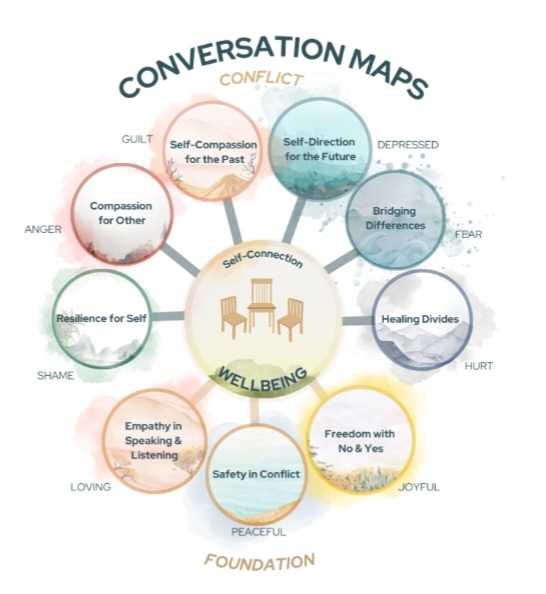
MediateYourLifeApp.com/resources

Mediate Your Life weekly online course
(Guided Tour of MYL Maps)
I hope some of these resources may be sign posts on your path.
“Street Giraffe” is a term originally coined by the late Marshall Rosenberg to connote a more naturalized, colloquial form of Nonviolent Communication.
More as to naturalizing NVC here & here
🚸🦒
On Shifting to Needs Consciousness
“This means prioritizing the consciousness over the form…”
You’re also welcome to contact me, Pamela (a.k.a. @StreetGiraffe), here for additional information, consultations (bandwidth/schedule-permitting) referencing NVC mediation/mentoring, &/or referrals to some of my favorite giraffes who could potentially serve as farsighted guides.

Pamela, streetgiraffes.com facilitator//blogger
Dialogue Lab for Mediate One’s Life skills
More as to my path here.

More resources:
NVC Mediation / Mediate One’s Life
John Kinyon – Contact Information
(Facebook group)
Aya Caspi – Convergent Facilitation
Dominic Barter – Restorative Communication
(Originator of Mediate Your Life maps)

(courtesy of JohnKinyon.com)
See more re: self-connection practice – breath, body, need (map): Peace/Love/Joy
&/or
“Every time I mess up is a chance to practice.”
See CNVC.org referencing my other blog here
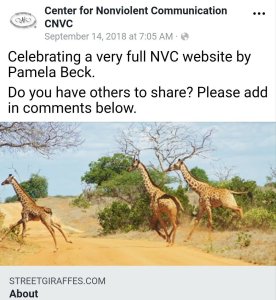
More as to blog/telepractice:
More as to additional NVC resources compiled by Pamela/@StreetGiraffe (facilitator/blogger of @streetgiraffes) here
“Never question the beauty of what you are saying because someone reacts with pain, judgement, criticism. It just means they have not heard you.”
~ Marshall Rosenberg
This telepractice/blog grew out of a class on how to express a more colloquial form of NVC.
Intense, Uncomfortable Emotions
Including weekly, free zoom calls (with psychotherapist Dr. Yvette Erasmus, NVC mediator John Kinyon & Matrix co-creators the Manskes)
see also:
Turning Towards What Is Difficult
Oren Jay Sofer: audio-recordings
Oren’s Mindful Communication – YouTube

“Street Giraffe” is a synonym for Nonviolent Communication (NVC) and beneath is a handout from CNVC which outlines the original model, which was in place for about two decades, until 1989, and included observations, feelings, and requests (however utilized the notion of dreams and/or wishes in lieu of universal human needs). To learn more as to the late Marshall Rosenberg and the trajectory of how Nonviolent Communication evolved, please watch here to the first generation of NVC trainers.
(More as to “street giraffe” [jackal/giraffe] origin story here)
NVC Academy: Three Levels of Observation

When Are You Ready to Have a Difficult Conversation?
@YvetteErasmusPsyD via YouTube:
On “Truth, Care and Words“
~ Miki Kashtan:
“One of the reasons why the conditioning to be inauthentic is in place is because of the widespread perception that truth and care are incompatible. I challenge that assumption deeply, and have come to believe that any truth can be combined with sufficient care to maintain connection while delivering it… (continues)“
Cornerstone essay for my NVC practice:
Wanting Fully Without Attachment
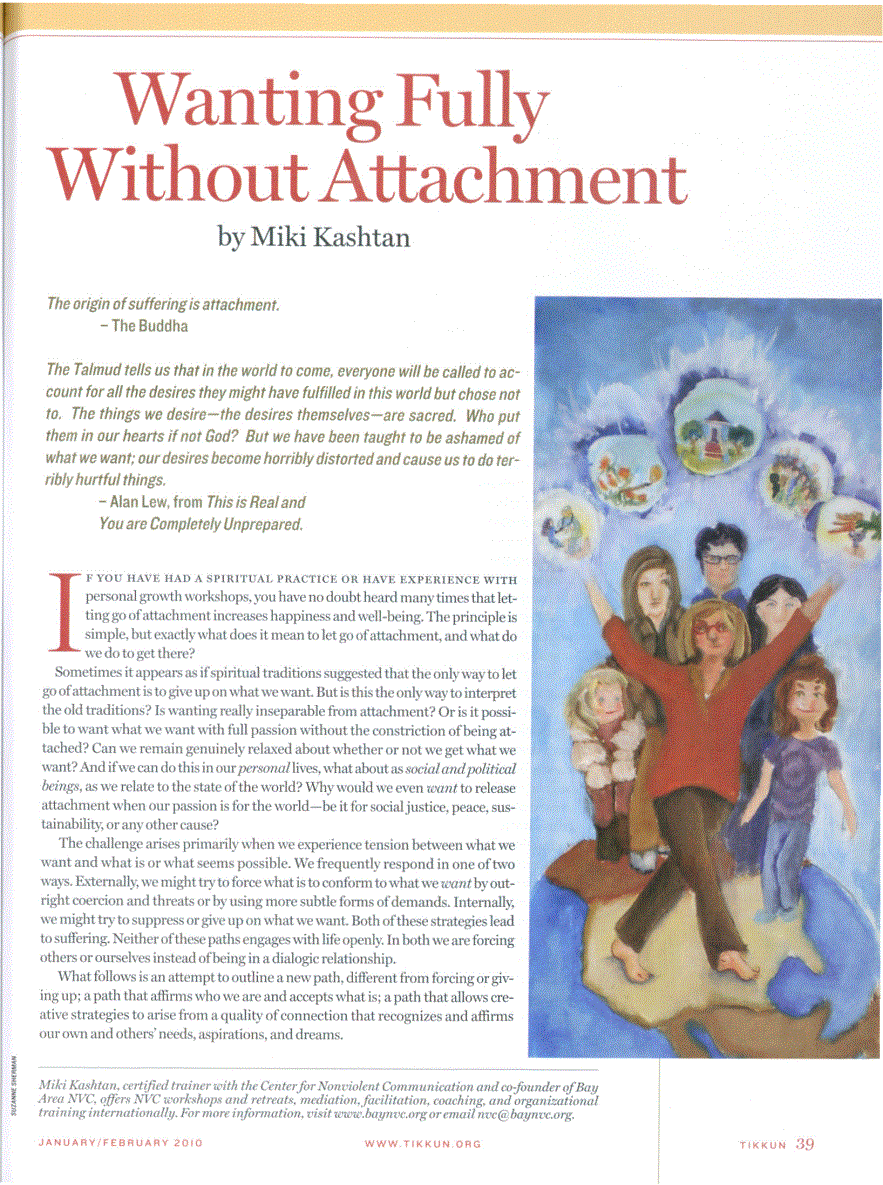
“…Because of this particular challenge, I see wanting without attachment as a deep spiritual practice. I am still learning, and will probably continue to learn.” ~ Miki Kashtan via Why Wanting Matters | The Fearless Heart
Wanting Fully Without Attacment [PDF]
 Since 2011, when I first conceived of this blog (in conjunction with a telepractice-group), its title “street giraffe” has morphed and come to mean a myriad of differing things, for me personally, however at its root it’s a synonym for Nonviolent Communication, with its counterintuitive name.
Since 2011, when I first conceived of this blog (in conjunction with a telepractice-group), its title “street giraffe” has morphed and come to mean a myriad of differing things, for me personally, however at its root it’s a synonym for Nonviolent Communication, with its counterintuitive name.
I once heard it said that how this NVC label was chosen had largely to do with the quality of participants it drew in when put on a flyer!
What Is “Nonviolent” about Nonviolent Communication?
By Miki Kashtan
One of the most frequent questions I hear when I talk about Nonviolent Communication is “Why Nonviolent?” People feel uneasy. They hear the word nonviolent as a combination of two words, as a negation of violence. They don’t think of themselves as violent, and find it hard to embrace the name.
For some time I felt similarly. I was happier when I heard people talk about Compassionate Communication instead of Nonviolent Communication (NVC), because it felt more positive. After all, isn’t the practice of about focusing on what we want, where we are going, instead of looking at what’s not working? Why would the name be any different?
Like others, I was unaware of the long-standing tradition of nonviolence to which Nonviolent Communication (NVC) traces its origins. Then I learned more about Gandhi. I became more acquainted with the story of the Civil Rights movement. Then I fell in love with the name Marshall Rosenberg gave to this practice, and more so over the years. Here’s why.
Nonviolence as Love
The word nonviolence is the closest literal translation that Gandhi found to the Sanskrit word ahimsa. Although in English this word appears as a negation, in Sanskrit naming a concept or quality through negation instead of directly is sometimes a way of suggesting it is too great to be named. Indeed, avera, the word for love in Sanskrit, literally translates into “non-hatred.” (continues)
Learn more as to various approaches to NVC (including more as to the practice of “Wanting Fully Without Attachment” & Why Wanting Matters).
#MediateOnesLife
@StreetGiraffe
Other NVC Learning Venues
The Center for Nonviolent Communication
Beneath courtesy of Louise Evans, Coach/Corporate Trainer, Author of 5 Chairs 5 Choices:
[Giraffe-Inspired] TEDx Talk: Own Your Behaviours, Master Your Communication
“…and for all his sweetness, he had the tiger and the jackal in his soul.” Voltairine de Cleyre
“I once asked Marshall Rosenberg, creator of Nonviolent Communication, what it would take for me to ‘really learn this stuff’. His answer: ‘Practice, practice, practice.'” (continues)
– Lucy Leu, author of Nonviolent Communication Companion Workbook
3 Ways to Practice Nonviolent Communication – wikiHow
Any feedback you’d like to offer?

What People Mean When They Judge Others
Additional information, beneath, regarding both NVC (a.k.a. Conscious Communication) & NVC Mediation Resources
Our monthly NVC sangha, a free ‘dialogue lab’ (skill-building) tele-practice group w/ iGiraffe has an affiliated Street Giraffes blog — which also serves as a cache of heuristic materials for further, self-discovered, self-appropriated exploration. The intention of both the blog and group format is to blend complementary modalities, such as interweaving Focusing & Mindfulness, towards the end of each having an opportunity to carve out their own, individuated path (as an NVC practitioner).
Streetify & Naturalizing
Please click here to learn more.
And feel free to email me at:
streetgiraffes@gmail.com
(with any questions you may have)

By McKay Savage from London, UK
&/or follow us via social media:
@StreetGiraffe
Facebook.com/streetgiraffes
#NVCpractices
#streetgiraffes

A giraffe at Giraffe Manor, Nairobi, Kenya
by Push the button
Video via Marianne Van Dijk – Cup of Empathy/YouTube Channel
- What is working about your [NVC/dialogic] practice?
- What gets in the way of communicating mindfully?
- What is your vision for speaking & listening with equanimity/presence?
- What next step(s) can you take to enhance the quality of connection you seek?
Handy Handouts | Street Giraffes
Kate Raffin – On Flowers, Tears and Lightbulbs
“Balancing my yearning to grow with acceptance of who I am right now”

Kate’s Giraffe Journal
ZENVC’s iGiraffe
Our Toolbox

(Minnesota State Capitol Woodworkers Toolbox Historical Society)

Pathways to Liberation – Matrix
‘An NVC practice as dustpan & brush…’
– Kit Miller
 Composting from the grist of our everyday lives
Composting from the grist of our everyday lives
Other NVC Learning Venues
Practice Groups | CNVC
Online practice groups | CNVC
Compassionate Leadership Free Teleclass
NVC Academy (see more)
Ongo Online: The Practice of Everyday Life – ZENVC
Kinyon’s Mediate Your Life learning resources

(Via Wiki: Giraffe on the Masai Mara by Richard Rhee)
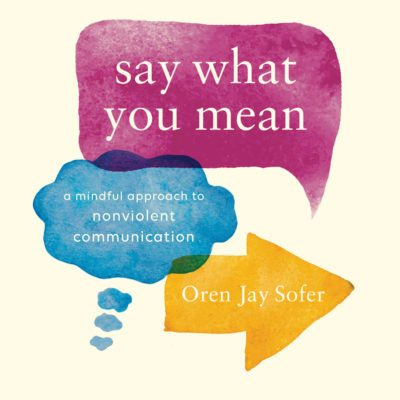
Say What You Mean: A Mindful Approach to Nonviolent Communication
“If I had just one book to recommend about interpersonal communication, it would be this one.”
~ Rick Hanson, PhD
www.orenjaysofer.com/blog-index
&
Ike Lasater (at about the 7 minute mark, beneath): “And, of course, you can use these skills in your day to day life…We use mediation as the metaphor, but this is really about mediating your life: how to go from the conflicts within your head, to conflicts with other people, to supporting — by lending your skills — to people who are in conflict.”
The Three-Chair Model for Learning NVC [Mediation]:
Developing Capacity for Mindful Presence, Connection, and Skill with NVC
By Ike Lasater & John Kinyon
With Julie Stiles
Excerpt: Conclusion
“…We find the three-chair model to be a powerful pedagogical tool that goes beyond people simply learning conflict resolution skills. It provides a unique way to practice with close in time feedback from a coach and others, it offers ample opportunity for personal growth, helps people integrate core NVC skills into their daily life, and supports the development of concrete mediation skills. As we have used this model over the course of years, we see the small shifts people make accumulate over time, fundamentally shifting their ability to be present and connect with themselves and others even in difficult conflictual situations. This gives us hope. With the looming crisis we see ahead—exponential population growth and climate change resulting in huge dislocations of people, all greater stimulus for conflict—we would like people to be able to cope more effectively with whatever lies in the future, collectively and individually. For us, NVC and the three-chair model provide a strategy for people to integrate skills into their lives that allow them to learn a whole new way of being and be agents for the creation of the kind of world that they want to live in.”
🪑🪑🪑
3Chairs Project for Difficult Conversations That Change Our World
Vision & Mission
The vision of the 3Chairs Project is a critical mass of people around the world working together to respond to the challenges we face, and creating a peaceful, healthy, and sustainable world.
The mission of the project is people having difficult and important conversations — personal, work, political — using a “3 chairs” structure and process that brings mindful awareness, compassion and collaboration to these conversations. It’s about hearing and understanding each other in our differences and our pain, without needing to agree, and connecting at the level of our shared humanity to contribute to one another’s well being. It’s about having conversations that change us, that create the life and relationships we want, and that move us toward the world we envision… (continues here)

Photo by Pixabay on Pexels.com
John Kinyon, “Three chairs can change your life…”
🪑🪑🪑
 François Barraud – La Tailleuse de Soupe
François Barraud – La Tailleuse de Soupe
Taking the Third Chair – Mediate Your Life
Excerpt (via John Kinyon): “Three chairs can change your life. In the world of professional dispute resolution, the three chairs represent two disputants and a mediator. In our Mediate Your Life training, you learn to ‘take the third chair.’ From this perspective, you perceive a different reality. You become more centered and effective in responding to life’s challenges and conflicts…. Seeing the situation from the third chair can be very difficult. Although obvious and simple at one level, the shift in perspective is a radical one that goes deeper and deeper. I have at times found it quite challenging — and also extremely valuable — to live this out in my own life…” (continues)
See also: The Self-Connection Process and “Taking the 3rd Chair” in Difficult Conversations – by John Kinyon
5 Steps of NVC-Mediation – by Ike Lasater
Essay by Ike Lasater:
What is NVC Mediation? A Powerful Model for Healing and Reconciling Conflict
Lasater, “To be a human being is to regularly be in conflict with oneself and others…” (continues)
Ike & John’s Approach to NVC Mediation
9 Skills of NVC-Mediation – by Ike Lasater
John Kinyon on NVC-Mediation
Additional videos: MediateYourLife
 Muhammad Mahdi Karim
Muhammad Mahdi Karim
Whether you may be interested in learning more through a one-on-one conversation, or possibly even getting a sense of how NVC Mediation works in practice, please feel free to send an email to me so that we might set up a time to speak.
Additional information: Contact Us Here
 Three Peasants in Conversation by Albrecht Dürer
Three Peasants in Conversation by Albrecht Dürer
Healthy Communication – Dr. Yvette Erasmus
NVC podcast
Conversations from the Heart:
Apple Podcasts
Audible
Additional NVC podcast here
More … @MediateOnesLife Credit: Meu
Credit: Meu
Several mediators that I would recommend:
Godfrey Spencer
Aya Caspi
Jan Blum
Glyn Conlon
Kate Raffin
Our referrals for mediation &/or mentoring/coaching are logistically feasible through phone/Skype, however you might also find mediators locally through contacting CNVC or Mediate Your Life directly.
Additional Resources:
CNVC certified trainers (directory) | The Center for Nonviolent Communication
About Mediate Your Life Training – Founders/Blog/Handouts
Living Connected – NVC Podcast

By Roberto D’Angelo (roberdan) via Wikimedia Commons
Lastly, I intend to occasionally write @StDispatches blog entries detailing my own, more idiosyncratic ‘experiments with truth’ — a kind of #MediateOnesLife diary — which will blend my experiences as a street giraffe practitioner with other, more personal-as-political preoccupations. I’ll post a link to the first entry here, shortly.

By Schnobby via Wikimedia Commons



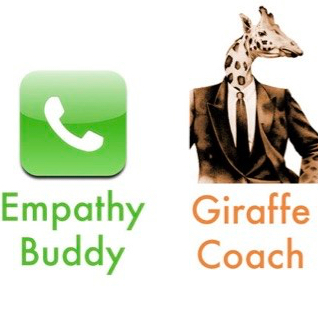


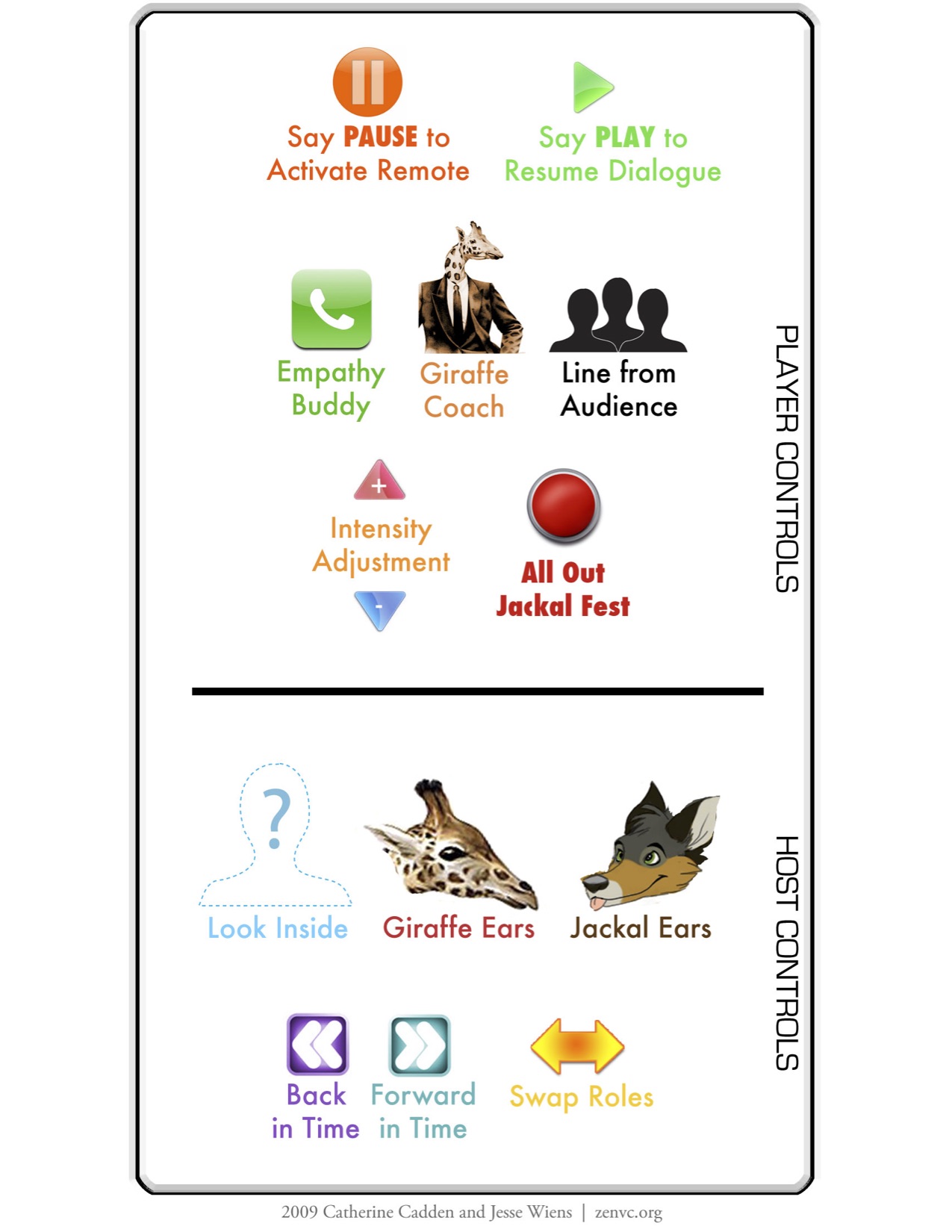


 “I am a girackal. Or a jackaffe. Or some such creature.”
“I am a girackal. Or a jackaffe. Or some such creature.”

